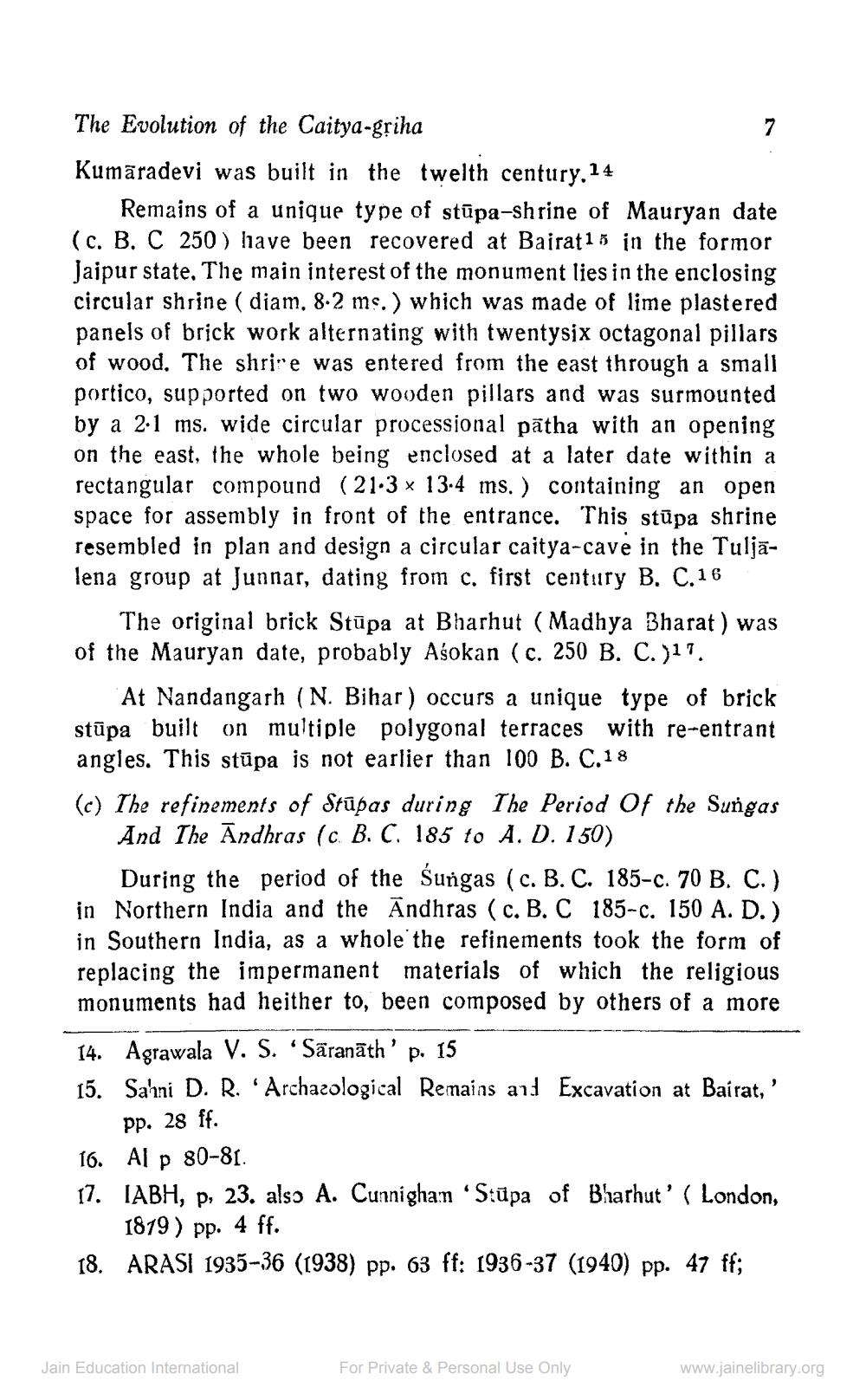________________
The Evolution of the Caitya-gļiha Kumāradevi was built in the twelth century. 14
Remains of a unique type of stūpa-shrine of Mauryan date (c. B. C 250 ) have been recovered at Bairat15 in the formor jaipur state. The main interest of the monument lies in the enclosing circular shrine ( diam. 8.2 ms.) which was made of lime plastered panels of brick work alternating with twentysix octagonal pillars of wood. The shrire was entered from the east through a small portico, supported on two wooden pillars and was surmounted by a 2.1 ms. wide circular processional pātha with an opening on the east, the whole being enclosed at a later date within a rectangular compound (21.3 * 13.4 ms.) containing an open space for assembly in front of the entrance. This stūpa shrine resembled in plan and design a circular caitya-cave in the Tuljālena group at Junnar, dating from c. first century B. C.16
The original brick Stūpa at Bharhut (Madhya Bharat) was of the Mauryan date, probably Aśokan (c. 250 B. C.)17.
At Nandangarh (N. Bihar ) occurs a unique type of brick stūpa built on multiple polygonal terraces with re-entrant angles. This stūpa is not earlier than 100 B. C.18 (c) The refinements of Stūpas during The Period of the Sungas
And The Andhras (c B. C. 185 to A. D. 150)
During the period of the Sungas (c. B. C. 185-c. 70 B. C.) in Northern India and the Andhras (c. B. C 185-c. 150 A. D.) in Southern India, as a whole the refinements took the form of replacing the impermanent materials of which the religious monuments had heither to, been composed by others of a more 14. Agrawala V. S. 'Sāranāth' p. 15 15. Sahni D. R. 'Archazological Remains and Excavation at Bairat,'
pp. 28 ff. 16. Al p 80-81. 17. IABH, p, 23. alsə A. Cunnigham Stūpa of Bharhut'( London,
1819) pp. 4 ff. 18. ARASI 1935-36 (1938) pp. 63 ff: 1936-37 (1940) pp. 47 ff;
Jain Education International
For Private & Personal Use Only
www.jainelibrary.org




